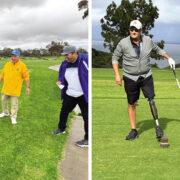PEGGY Young worked as a part-time driver for United Parcel Service (UPS). Her responsibilities included pickup and delivery of packages that had arrived by air carrier the previous night. In 2006, after suffering several miscarriages, she became pregnant. Her doctor told her that she should not lift more than 20 pounds during the first 20 weeks of her pregnancy and after that, she should not lift more than 10 pounds. UPS required drivers like Young to be able to lift parcels weighing up to 70 pounds (and up to 150 pounds with assistance). Young had requested to be placed on light duty while under this restriction. However, UPS told Young she could not work while under a lifting restriction. Young then stayed home without pay during most of the time she was pregnant and eventually lost her employee medical coverage.
Young sued UPS for discriminating against her based on sex, due to her pregnancy, and that it had refused to treat her equally and in the same manner as other employees with a similar ability or inability to work.
UPS argued that it did not discriminate against Young on the basis of her pregnancy. All drivers like Young must satisfy the lifting requirements. Since Young was under doctor’s orders not to do any heavy lifting, Young could not satisfy the lifting requirements. Therefore, she could not return to work as a driver. This decision had nothing to do with her pregnancy, said UPS.
Young countered that UPS accommodated its other workers and gave them light-duty assignments if they were injured on the job, had a car or truck accident, were disabled, or failed their medical exam and lost their license. Young argued that these drivers were similar to her in their inability to do their work. However, they were accommodated and she was not because she was pregnant, and they were not.
Her case went all the way to the U.S. Supreme Court and attracted a lot of support, including from a group of law professors and women’s rights organizations, who pointed out that the case upheld stereotyping of pregnant workers who lose their workplace rights because they were treated differently than other temporarily disabled workers.
The Pregnancy Discrimination Act requires employers to treat “women affected by pregnancy . . . the same for all employment-related purposes . . . as other persons not so affected but similar in their ability or inability to work.” In ruling for the employee, the Supreme Court set requirements for how Peggy Young, and other pregnant employees, should show that they are being discriminated or treated differently at work because they’re pregnant. A pregnant employee must offer proof that:
She belongs to a class of persons who are or who can become pregnant;
She asked to be accommodated in the workplace when she could not fulfill her normal duties;
The employer refused to provide accommodation, and yet the employer had actually provided an accommodation for others who are just as unable to do their work temporarily.
Once the employee has proven all three of the above, the employer must then show that its workplace policy was not biased against pregnant workers, but had a neutral business reason. In response, the pregnant employee must show that the business reason was false, and was only a pretext for bias. The employee must also show that the workplace policy puts a “significant burden” on female workers, and the policy is “not sufficiently strong” to justify that burden. If these are established, then the employee has a valid discrimination claim.
Peggy Young’s case was decided in the context of federal law. In California, pregnancy and all its related medical conditions (such as severe morning sickness, doctor-ordered bed rest, childbirth, recovery from childbirth) is considered a temporary disability and, therefore, protected as such. If an employee is disabled because of pregnancy or childbirth, and requests reasonable accommodation upon the advice of her health-care provider, an employer must provide reasonable accommodation.
***
The Law Offices of C. Joe Sayas, Jr. welcomes inquiries about this topic. All inquiries are confidential and at no-cost. Atty. Sayas’ Law Office is located at 500 N. Brand Blvd. Suite 980, Glendale, CA 91203. You can contact the office at (818) 291-0088 or visit www.joesayaslaw.com.
***
C. Joe Sayas, Jr., Esq. is trial attorney who has obtained several million dollar recoveries for his clients against employers and insurance companies. He has been selected as a Super Lawyer by the Los Angeles Magazine, featured in the cover of Los Angeles Daily Journal’s Verdicts and Settlements, and is a member of the Million Dollar-Advocates Forum.




